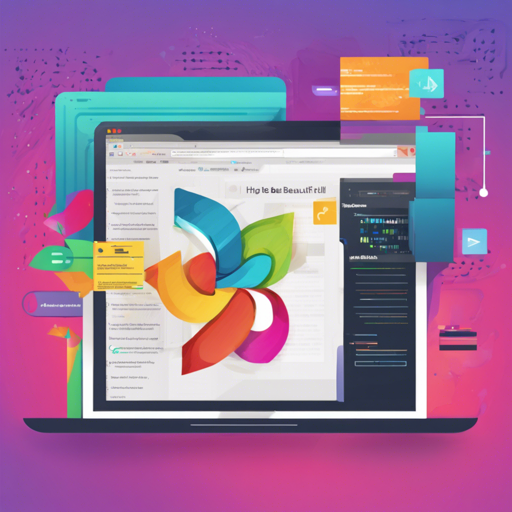If you’ve ever dreamed of designing stunning graphical user interfaces (GUIs) for your Python applications, you’re in the right place! This guide will walk you through using htmlPy, a powerful library that efficiently bridges the gap between Python and modern web technologies. So, grab your coding hat, and let’s dive in!
What is htmlPy?
htmlPy is a wrapper around PySide‘s QtWebKit library. This means it allows you to create desktop applications that leverage the beauty of HTML5, CSS3, and JavaScript. It’s customizable, cross-platform, and compatible with both Python 2 and 3. Whether you’re using Django, Flask, or even SciPy, htmlPy can seamlessly integrate with your favorite libraries.
Getting Started: Installation Instructions
The first step towards creating your GUI is to install htmlPy. You can find detailed installation instructions and additional resources in the official documentation.
Understanding the Code: An Analogy
Think of your application as a well-prepared dish where every ingredient plays an essential role. The Back-End code is akin to the chef in your kitchen, orchestrating the preparation of the dish:
- The chef (the BackEnd class) manages what goes into your dish (the app).
- Once it’s ready, you need servers (front-end) to serve those dishes (HTML files) to the diners (users).
Now, let’s take a closer look at the components of our application:
import htmlPy
class BackEnd(htmlPy.Object):
def __init__(self, app):
super(BackEnd, self).__init__()
self.app = app
@htmlPy.Slot()
def say_hello_world(self):
self.app.html = u"Hello, world"
The structure is also fundamental, as our GUI requires essential bindings, much like ensuring we have the correct utensils and dishes to serve the food:
import htmlPy
from back_end import BackEnd
app = htmlPy.AppGUI(title=u"Sample application")
app.maximized = True
app.template_path = "."
app.bind(BackEnd(app))
app.template = ("index.html",)
if __name__ == "__main__":
app.start()
Creating the Front-End
The front-end is where your users will interact with your application. Here’s how to set up a simple HTML file that allows users to trigger the back-end function:
Click to say Hello, world
Troubleshooting Tips
If you encounter any hiccups along the way, here are some helpful troubleshooting ideas:
- Ensure all dependencies are correctly installed and compatible with the version of Python you are using.
- Check for typos or syntax errors in the code. A misplaced comma can cause unexpected results!
- Review the documentation carefully; sometimes, a little detail can make a world of difference.
- Make use of community forums or seek help from others who have used htmlPy.
For more insights, updates, or to collaborate on AI development projects, stay connected with fxis.ai.
Final Thoughts
At fxis.ai, we believe that such advancements are crucial for the future of AI, as they enable more comprehensive and effective solutions. Our team is continually exploring new methodologies to push the envelope in artificial intelligence, ensuring that our clients benefit from the latest technological innovations.
Now that you have a good grasp of how to create GUIs in Python using htmlPy, you can build wonderful applications that are both functional and visually appealing. Happy coding!

